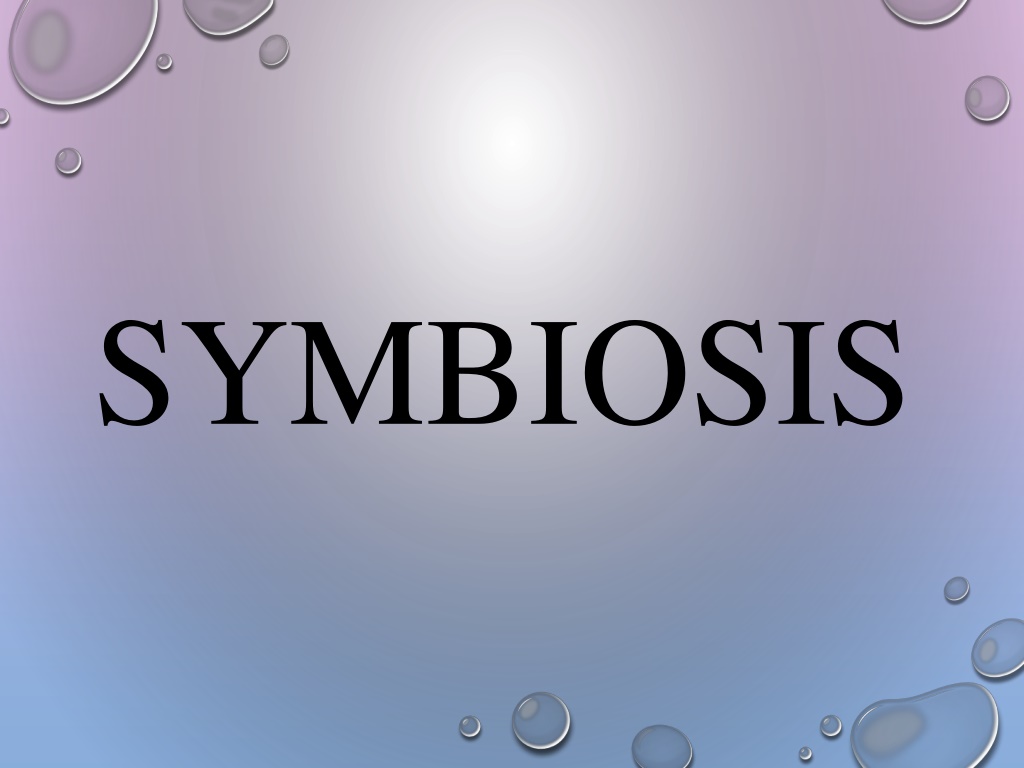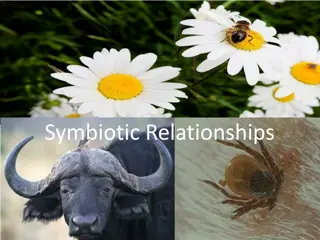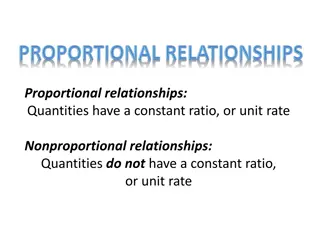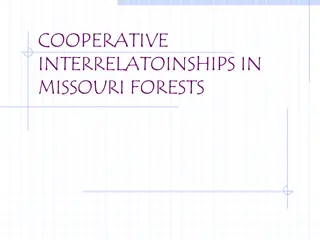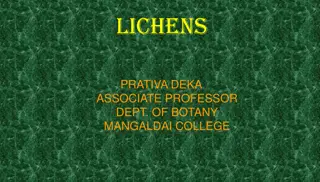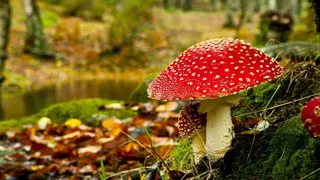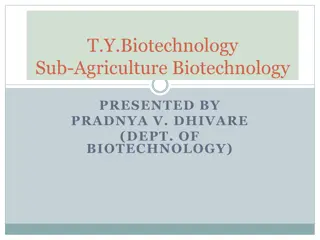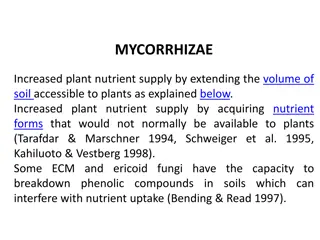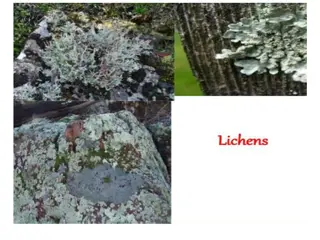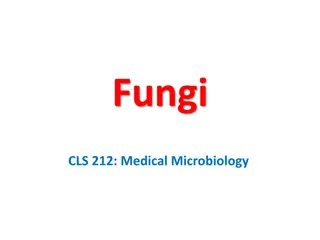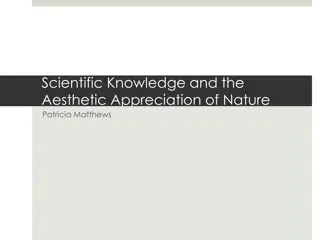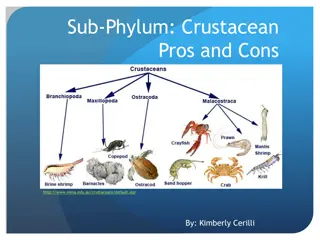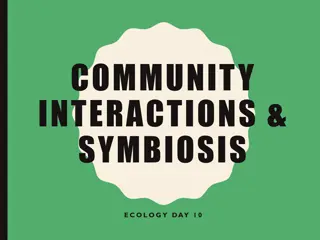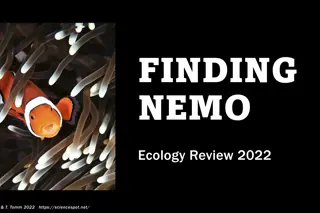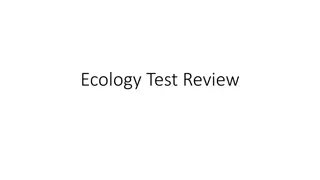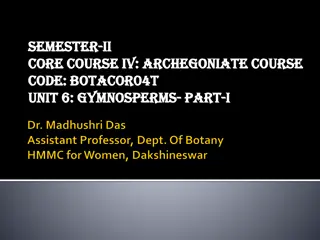Explore Symbiotic Relationships in Nature
Understand symbiosis through examples like mutualism, commensalism, and parasitism. Discover unique partnerships like the Acacia Tree and Ants, Boxer Crab and Anemone, and more. Learn how different species benefit from living together in nature.
Download Presentation

Please find below an Image/Link to download the presentation.
The content on the website is provided AS IS for your information and personal use only. It may not be sold, licensed, or shared on other websites without obtaining consent from the author. Download presentation by click this link. If you encounter any issues during the download, it is possible that the publisher has removed the file from their server.
E N D
Presentation Transcript
AFTER THE PRESENTATION, I SHOULD BE ABLE TO: DEFINE SYMBIOSIS. NAME THE DIFFERENT KINDS OF SYMBIOTIC RELATIONSHIPS. LIST SOME EXAMPLES OF SYMBIOTIC RELATIONSHIPS.
SYMBIOSIS WHAT IT MEANS: TWO ORGANISMS THAT LIVE TOGETHER TEMPORARILY OR FOR A LONGER TIME AT LEAST ONE OF THE ORGANISMS BENEFITS FROM THE RELATIONSHIP
SYMBIOTIC RELATIONSHIPS MUTUALISM: BOTH ORGANISMS BENEFIT COMMENSALISM: ONE ORGANISMS BENEFITS WHILE THE OTHER ORGANISM REMAINS UNHARMED. PARASITISM: ONE ORGANISM BENEFITS WHILE THE OTHER ORGANISM IS HARMED
Mutualism Organism One Organism Two
Commensalism Organism One Organism Two
Parasitism Organism One Organism Two
Swollen Thorn Acacia Tree & Ants Mutualism The tree provides a nursery for the ants in the thorns and makes special food for the ant babies. In return the ants sting and attack any other plants or insects that try to invade the tree. What symbiotic relationship is this?
BOXER CRAB & ANEMONE This Boxer Crab, also known as the pom pom crab , carries a pair of stinging anemones in its claws, which it uses to defend itself from predators. The anemones get to move around which increases their food supply. mutualism What symbiotic relationship is this?
Moray Eel & Cleaner Fish mutualism This moray eel has a small fish cleaning between its teeth. The eel gets a clean mouth while the cleaner fish gets a nice meal. What symbiotic relationship is this?
Shark & Remora commensalism The remora attaches itself to the shark and saves energy since it doesn t have to swim, and it gets to snack on the sharks kills. The shark doesn t get anything. What symbiotic relationship is this?
Cattle & Cattle Egrets As cattle walk around eating grass they stirup lots of insects. The egrets eat the insects while the cow gets the benefit of fewer insects bothering them. What symbiotic relationship is this? commensalism
WHALES & BARNACLES Commensalism Barnacles need a place to anchor. They must wait for food to come their way. Some barnacles hitch a ride on unsuspecting whales who deliver them to a food source. The barnacles do not harm the whale. What symbiotic relationship is this
Loa Loa Worm & Human This worm infects humans by getting into the blood stream. It gets a warm, safe home in the blood stream. Humans are harmed because they may go blind or have other complications due to the parasite. What symbiotic relationship is this? parasitism
TAPEWORMS & CANINES What type of symbiotic relationship is this? parasitism
ZIKA VIRUS & HUMANS THE HUMAN IS BITTEN BY AN INFECTED MOSQUITO. THE VIRUS IS TRANSMITTED INTO THE BLOODSTREAM OF THE HUMAN FROM THE INFECTED MOSQUITO. FEVER, RASH, RED EYES, JOINT PAIN OR ASYMPTOMATIC WHAT SYMBIOTIC RELATIONSHIP IS THIS? parasitism
LETS REVIEW Answer each of following questions on a sheet of lined paper. 1. WHAT IS SYMBIOSIS? 2. WHAT ARE THE DIFFERENT KINDS OF SYMBIOTIC RELATIONSHIPS? 3. DESCRIBE ONE EXAMPLE OF EACH KIND OF SYMBIOTIC RELATIONSHIP.
